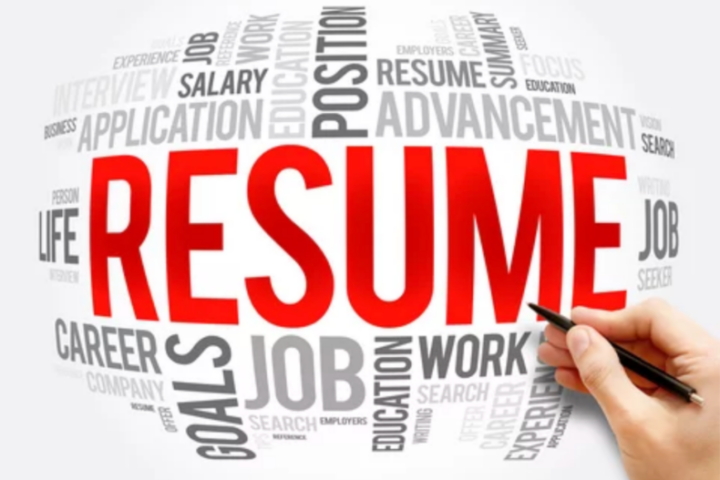One Monday morning in 2022, Amanda Jacobs, a recruitment manager for a mid-sized tech firm in Boston, opened her inbox to find 427 new resumes for a single entry-level software engineering position. She sighed. It was a familiar routine: hours spent combing through qualifications, guessing at the truth of self-praised cover letters, and trying to predict which applicant might be a fit. By noon, she was already exhausted, and the resumes blurred into a haze of keywords and credentials.
Fast-forward two years, and Amanda’s Monday mornings look very different. She still receives hundreds of applications, but now, an AI-powered applicant tracking system narrows them down to a curated shortlist of 15. Instead of spending her day wrestling with spreadsheets, Amanda uses that time to schedule meaningful interviews and connect with top candidates on a personal level. AI, Amanda admits, has transformed her job.
But her story isn’t unique. Across industries, recruiters and candidates alike are living through a seismic shift in how people find jobs and how companies hire talent. The advent of artificial intelligence in staffing and recruitment has turned a once-manual, intuition-driven process into one powered by data and algorithms. While the revolution is far from complete, it has already reshaped the industry in ways that few could have predicted—and even fewer fully understand.
Efficiency and the End of the Resume Pile

Recruitment has always been a numbers game, especially in high-demand sectors like technology, healthcare, and retail. The more applicants a company receives, the better their odds of finding the elusive “perfect fit.” But this flood of interest has long overwhelmed recruiters, bogging them down in administrative tasks and forcing them to make decisions under time pressure. For years, the hiring process felt both slow and incomplete, leaving both candidates and companies frustrated.
This is where AI has proven to be a game-changer. Amanda’s story illustrates how machine learning algorithms can comb through resumes in minutes, matching candidates’ qualifications with job descriptions with uncanny accuracy. These systems don’t just search for keywords; they analyze context, comparing job histories, skills, and even intangible qualities like a candidate’s career trajectory. The result? Recruiters can spend more time interviewing candidates and less time drowning in paperwork.
For candidates, the experience is no less transformative. No longer do applications disappear into a black hole, never to be acknowledged. With AI’s help, applicants receive quicker feedback and, in many cases, tailored suggestions for other roles they might be better suited for. This personalization, made possible by natural language processing and data analysis, marks a radical departure from the often-opaque hiring processes of the past.
The shift has also led to a deeper understanding of workforce trends. By aggregating and analyzing recruitment data, companies can identify skills gaps, predict hiring needs, and even adapt training programs to better prepare future candidates. This macro-level insight, driven by AI, benefits industries as a whole and underscores the long-term impact of these technologies.
Marter Matching, Fewer Mismatches

Not all jobs—or job seekers—are created equal. Traditionally, recruiters relied on gut instinct to pair candidates with roles, drawing on experience and intuition to predict which applicant might thrive in a particular environment. While this method has its merits, it’s also deeply flawed, prone to biases and human error.
AI changes the game entirely. By analyzing millions of data points, from a candidate’s LinkedIn activity to their responses on pre-screening assessments, AI can predict not only whether someone is qualified for a job but whether they’re likely to thrive in a company’s culture.
Consider David, a software engineer in Chicago who was disillusioned by a string of bad hires at his startup. After implementing AI-driven recruitment software, his company began prioritizing soft skills like collaboration and adaptability alongside technical qualifications. Within a year, turnover dropped by 35%, and the team dynamic improved dramatically. For David, AI wasn’t just a hiring tool; it was a lifeline.
This new approach has also addressed long-standing challenges in industries with high turnover rates, such as retail and hospitality. By prioritizing skills like adaptability and customer service, AI enables companies to make better hiring decisions and reduce churn. Employers gain employees who are not only qualified but are likely to stay longer and grow within the organization.
Additionally, AI-driven platforms are now empowering candidates to better understand their own strengths and weaknesses. Personalized career coaching features, integrated into some recruitment systems, provide actionable feedback and recommend resources to improve specific skills. This mutual benefit—companies finding better matches and candidates growing professionally—highlights the broader implications of AI in recruitment.
The Promise—and Perils—of Reducing Bias
Few topics in recruitment are as charged as bias. From gender and race to age and socioeconomic background, hiring decisions have long reflected systemic inequities, often unintentionally. The promise of AI, many argue, lies in its ability to correct these imbalances by focusing solely on data.
To some extent, it has succeeded. By anonymizing resumes and ignoring factors like names and photos, AI systems can eliminate unconscious bias at critical stages of the hiring process. This has led to more diverse candidate pools and fairer evaluations. But as critics are quick to point out, AI is only as unbiased as the data it’s trained on. When historical hiring data reflects societal inequities, algorithms can perpetuate those same patterns—sometimes in ways that are harder to detect.
Take the example of a financial firm that implemented AI to improve diversity in hiring. Initially, the results seemed promising—more candidates from underrepresented backgrounds were being interviewed. However, a closer look revealed that the algorithm was still favoring candidates from elite universities, perpetuating class-based biases baked into the training data. The firm ultimately reworked its system to focus on practical skills and performance indicators rather than academic pedigree, demonstrating the ongoing need for human oversight.
The challenge, then, lies in designing systems that prioritize fairness without sacrificing accuracy. Companies must walk a fine line, balancing the power of automation with the need for human oversight. As recruiters like Amanda have discovered, AI is a tool—not a substitute for judgment or empathy.
A New Era for Candidates

For job seekers, the arrival of AI has been both a blessing and a challenge. On one hand, it’s easier than ever to find opportunities tailored to specific skills and goals. AI-powered platforms analyze a candidate’s resume and recommend roles they might not have considered, opening doors that might otherwise remain closed. On the other hand, candidates must now contend with an evolving set of expectations. In a world where algorithms evaluate applications, a well-crafted resume or portfolio is no longer enough. Digital footprints, online assessments, and even LinkedIn activity have become crucial components of the hiring process.
Take Julia, a marketing professional in her late twenties, who recently landed a dream job at a Fortune 500 company. “It wasn’t just my resume,” she says. “The AI flagged my LinkedIn posts about analytics trends and suggested me for a role I didn’t even know existed.” For Julia, the key to success was embracing the digital-first nature of modern recruitment—and learning to showcase her skills in new, algorithm-friendly ways.
For older workers, however, the AI revolution presents unique challenges. Many have expressed frustration at being overlooked for roles due to algorithms prioritizing newer skill sets or keywords. To navigate this new terrain, career coaches are advising candidates to update their resumes with relevant terms and actively engage with professional platforms to improve their digital visibility.
Beyond individual efforts, entire industries are adapting. Universities and training institutions now integrate AI-friendly skill development into their curricula, ensuring graduates are prepared for the realities of modern hiring. This systemic approach underscores the ripple effects of AI on the broader labor market.
Proactive Sourcing and the Rise of Passive Candidates
AI’s greatest strength may be its ability to think ahead. In the past, recruiters focused their efforts on active job seekers—those who applied for positions or posted resumes online. But AI has enabled a more proactive approach, allowing companies to identify “passive candidates” who aren’t actively searching for jobs but might be open to the right opportunity.
By analyzing data from professional networks, social media, and other sources, AI can flag potential candidates who fit a company’s needs and reach out with personalized pitches. This has expanded the talent pool exponentially, giving companies access to a wider array of skills and perspectives. For candidates, it’s an invitation to explore opportunities they might never have pursued on their own.
This shift is especially significant in highly specialized fields like data science or artificial intelligence itself, where demand far outstrips supply. Companies no longer wait for talent to come to them—they go out and find it. In doing so, they’re reshaping the competitive landscape of recruitment, where speed and precision are now paramount.
Furthermore, proactive sourcing is transforming the recruiter’s role. It’s no longer enough to simply match resumes to job descriptions; recruiters must now act as strategic talent advisors, leveraging AI insights to anticipate future hiring needs and build robust pipelines. This evolution signals a broader shift toward recruitment as a dynamic, forward-thinking discipline.
What’s Next for AI in Recruitment?

If the past decade has been defined by automation and data, the future of recruitment will likely be shaped by personalization and empathy. Emerging AI technologies are already exploring new frontiers, from sentiment analysis in interviews to real-time feedback on applications. The ultimate goal is to create a hiring process that feels less like a transaction and more like a collaboration.
Consider the possibilities of virtual reality (VR) combined with AI in recruitment. Imagine candidates participating in immersive simulations that allow employers to assess their problem-solving abilities or teamwork skills in real-time. AI could then analyze the results to provide deeper insights into a candidate’s suitability for the role.
Meanwhile, advances in explainable AI are addressing transparency concerns, helping both recruiters and candidates understand how decisions are made. This clarity not only builds trust but also encourages more informed, data-driven decision-making on all sides.
But this evolution comes with risks. As AI becomes more sophisticated, companies must grapple with questions about transparency, ethics, and privacy. How much should candidates know about the algorithms evaluating them? How can companies ensure that their systems prioritize fairness? And perhaps most importantly, how can recruiters strike the right balance between efficiency and human connection?
For Amanda in Boston, these questions feel both urgent and abstract. “AI has made my job easier, no question,” she says. “But at the end of the day, hiring is still about people. No algorithm can replace that.”
The Human Element
As the staffing and recruitment industries continue their rapid transformation, one thing remains clear: AI is here to stay. But its success will depend not on how quickly companies adopt the latest technologies, but on how thoughtfully they integrate them into their processes.
For recruiters like Amanda, the challenge is learning to trust the tools without losing sight of the human stories behind each resume. For candidates like Julia, the goal is to navigate a world where opportunities are shaped by algorithms while staying true to their own aspirations.



